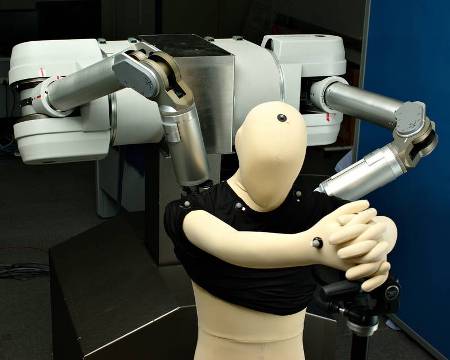The Nara Institute of Science and Technology (NAIST), a national corporation university in Japan, has developed the world’s first robotic system that can learn to dress the physically challenged as well as aged persons. By using the idea of skills transfer to a robot from a human caregiver, the robot receives reinforcement learning in minutes and adapts to the individual shape and size of the person being clothed.
 Barrett's WAM(TM) robotic arms help to dress the elderly and physically disabled.
Barrett's WAM(TM) robotic arms help to dress the elderly and physically disabled.
Barrett Technology, which produces the patented robotic arms, is working along with the researchers of NAIST. This international partnership has been a smooth combination of the advanced computer intelligence of NAIST and the contact-compliant hardware of Barrett.
According to Associate Professor, Tomohiro Shibata from the Mathematical Informatics Laboratory who also headed the research, Barrett's robots are incomparable because they are able to respond to even the slightest physical interactions, implementing the algorithms to learn to clothe people. Bill Townsend, CEO of Barrett, said that his company is impressed with Dr. Shibata's team for accomplishing such a complex assignment. This new application will help robotic arms to learn to clothe people in just a few minutes.
For elderly as well as physically challenged people, taking dresses on and off can be very difficult because of limited movement in the upper limbs. But at the same time, it is difficult to determine the optimal robotic motion for managing a soft material like clothing, against a person of a distinct shape and changing posture constantly.
The group led by Associate Professor Tomohiro Shibata, in response to the key technical problem has created a dual-arm robotic system, which can learn clothing-assistance motions after just a few trials. This can be achieved by carrying out a trial-and-error search termed reinforcement-learning rooted on actual movements used by a human being for clothing people.